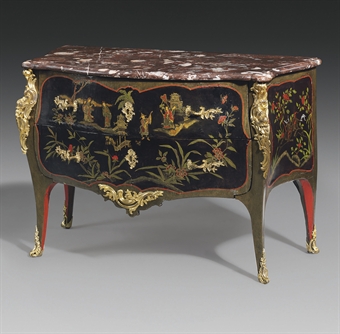This innovative decorative technique, which is now often referred to as 'Decoupage', originated in Venice in the mid 18th century.
Lacca povera (poor man's lacquer) is also known as arte povera (poor man's art), or lacca contrafatta (fake lacquer). In mid 18th century Venice, the taste for lacquerwork was so great that artists developed lacca povera as an alternative in order to meet the mass demand. This new, and relatively inexpensive, technique evolved alongside traditional lacquerwork in the production of handmade furniture.
The Technique
Craftsmen used engravings to decorate fitted furniture and non fitted furniture and other objects. These images were often obtained from specialist firms who produced sheets of engravings especially for lacca povera decoration. These were then coloured, cut, and pasted onto a prepared surface.
Several layers of varnish were applied to create a surface that resembled the high gloss effect of traditional lacquerwork, and the best examples resembled imports from the Orient. Initially, craftsmen favoured Chinoiserie designs, but European motifs also became popular.
The influence of the painter Jean Watteau and the designer Jean Berain could often be seen. The printed scenes varied from extravagant rocailles to maritime and pastoral themes. On the finest lacca povera, details were picked out in gilt or engraved once the varnish had dried. The most common colour for the background was red. Rare white lacca povera is now highly prized. Desks, chairs, tables, cabinets, and screens were all decorated using this technique.
Decoupage
The centre of professional production was Venice, but the technique became popular throughout Europe. In France the technique was renamed decoupage, from the French word couper, meaning to cut.
This skill was taught to ladies in the 18th century, and was mainly used on smaller, decorative objects, as it is today.
A LOUIS XV GILTWOOD PIER TABLE MID-1 8TH CENTURY
With later breche de violette serpentine marble top above a frieze with pierced floral foliate garlands, on pierced cabriole legs with trailing floral garlands joined by a rocky stretcher with boar and hounds.
Decorated throughout with figures among classical buildings and bucolic scenes and flowers, the fall front enclosing a drawer, and with further cushioned and serpentine drawers below.
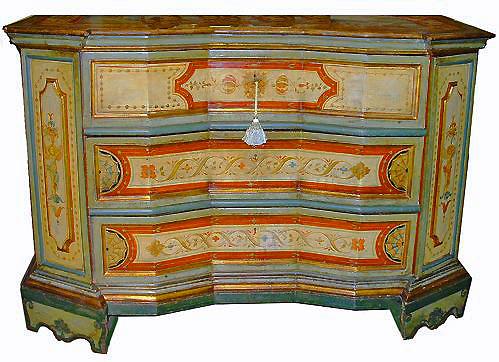

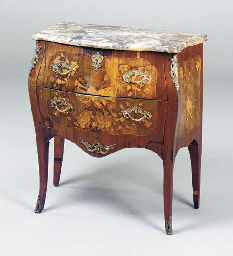
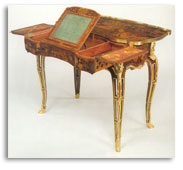
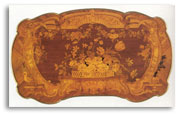
.jpg)

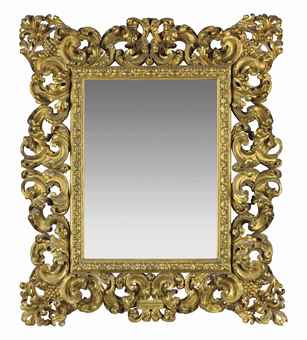
.JPG)

